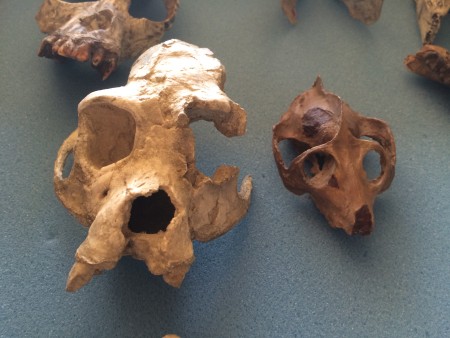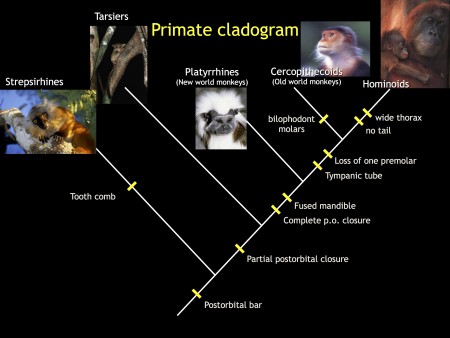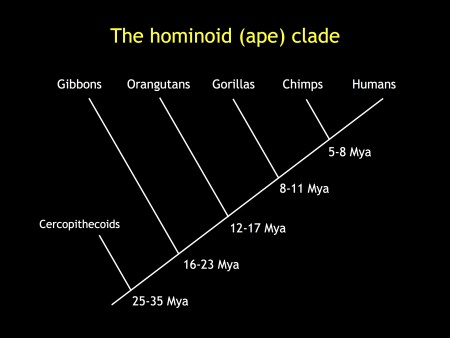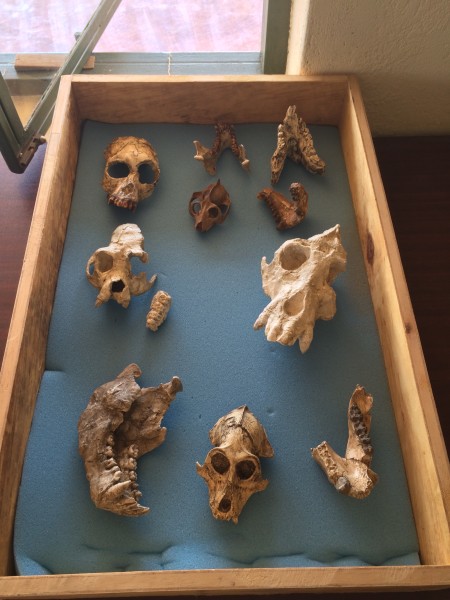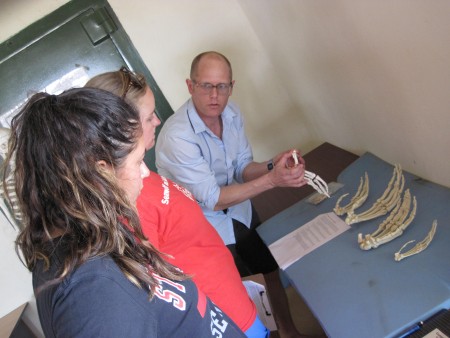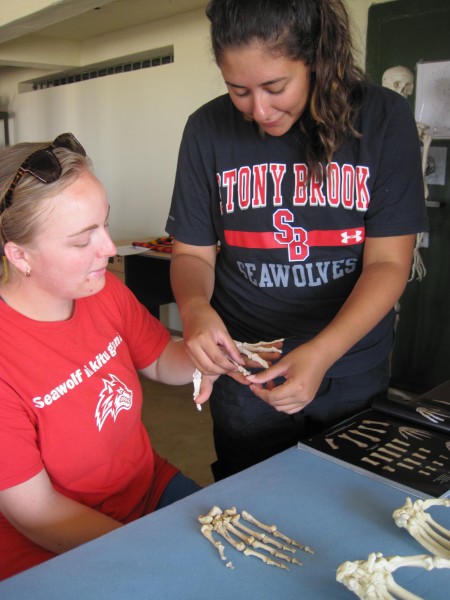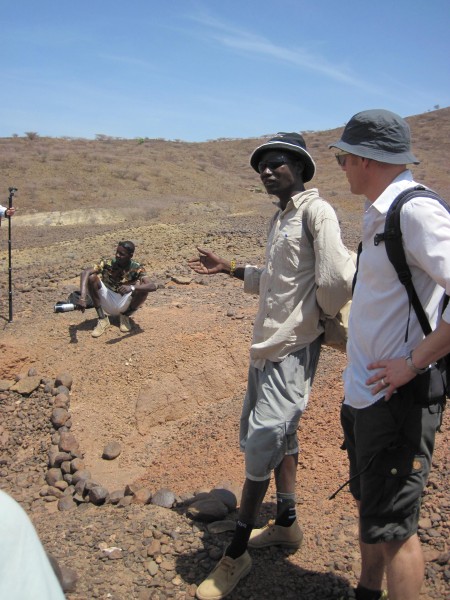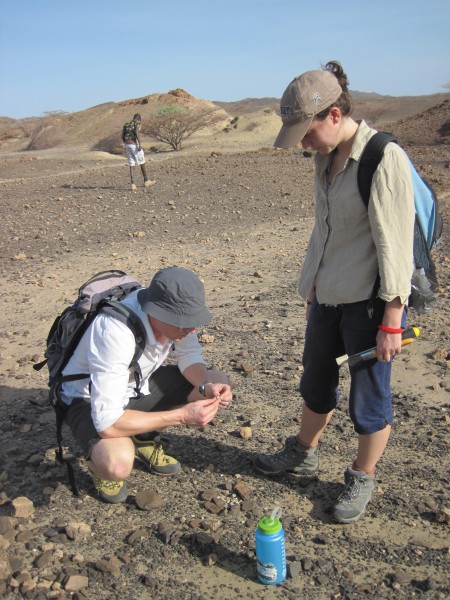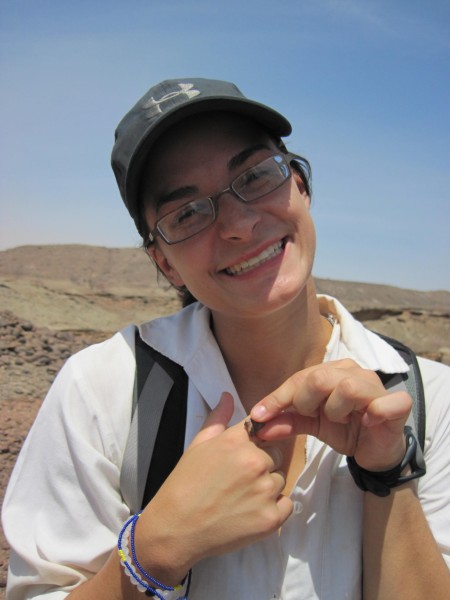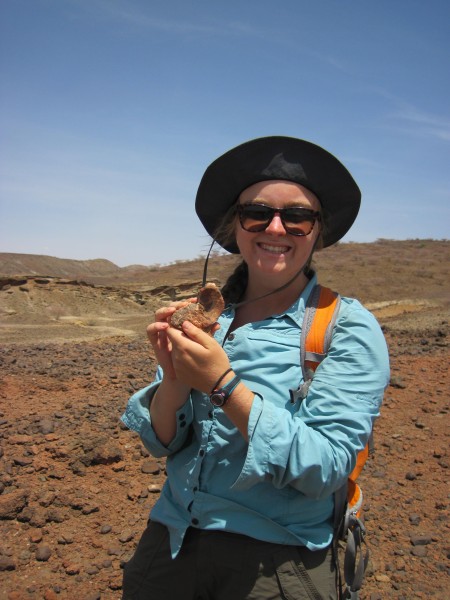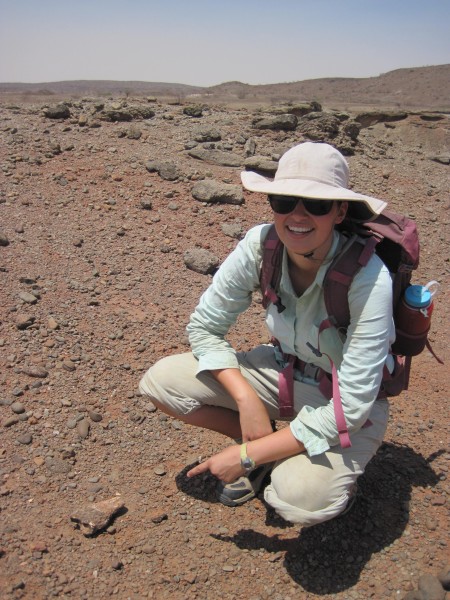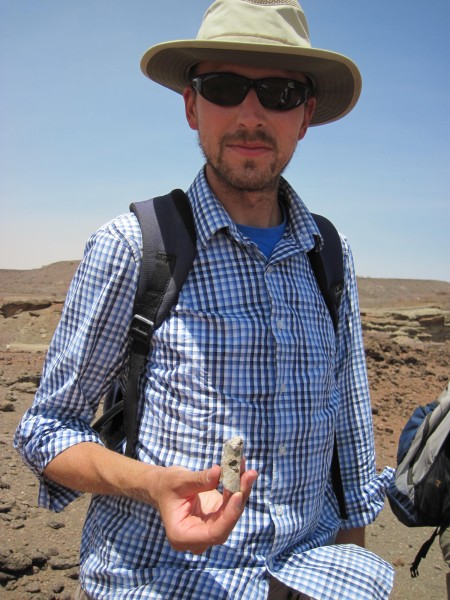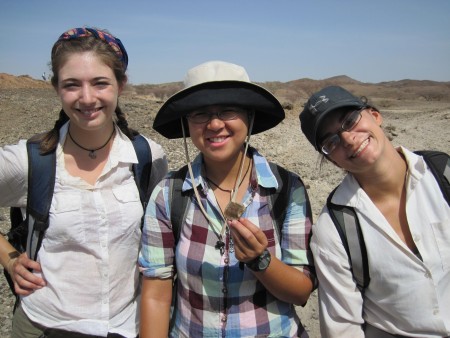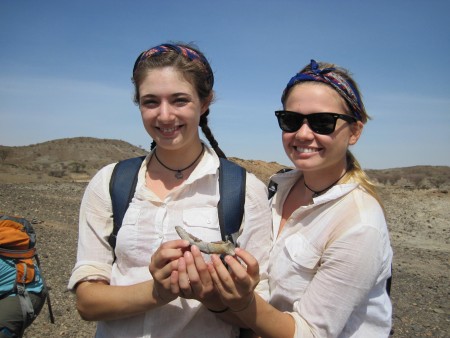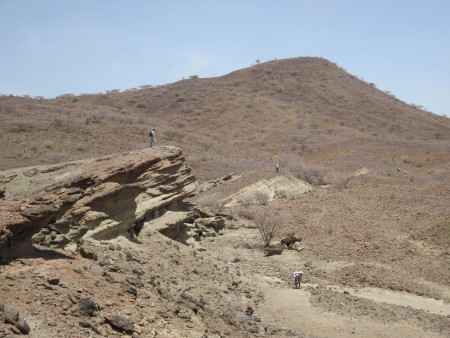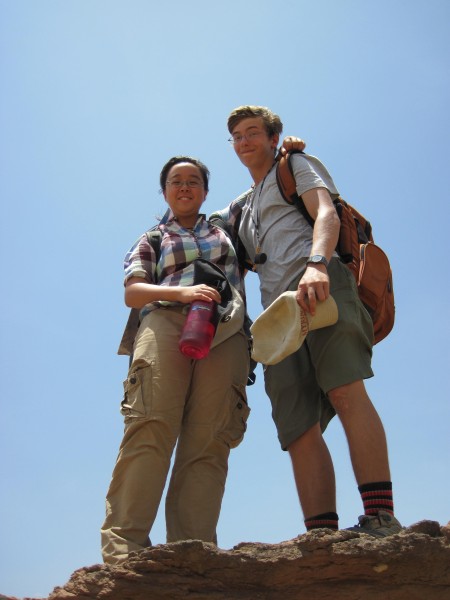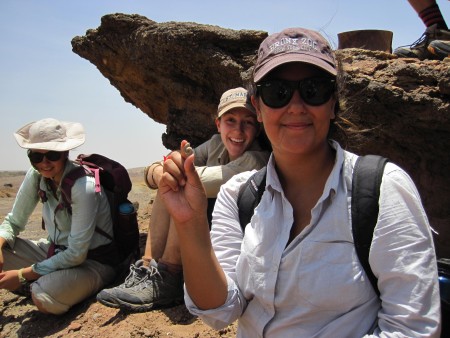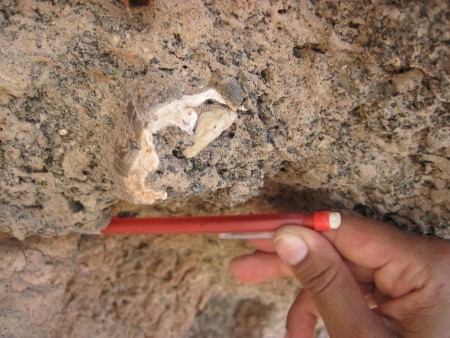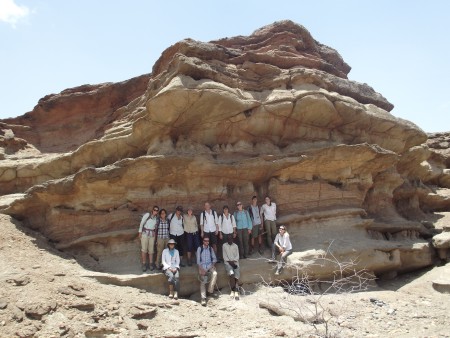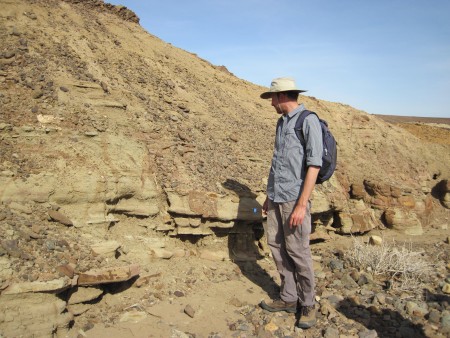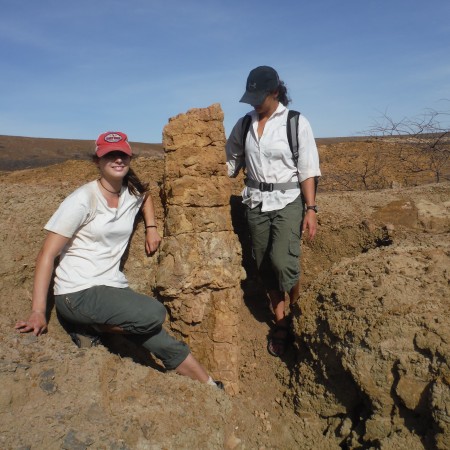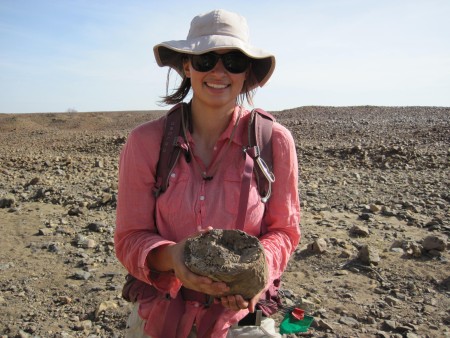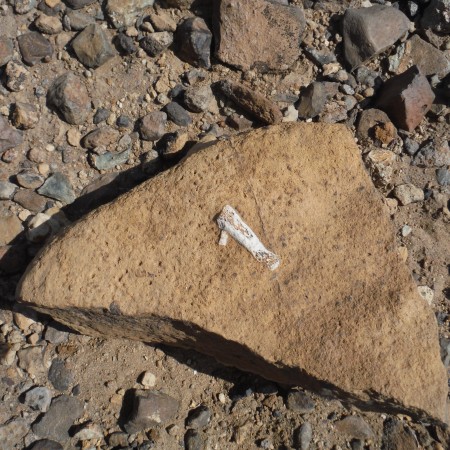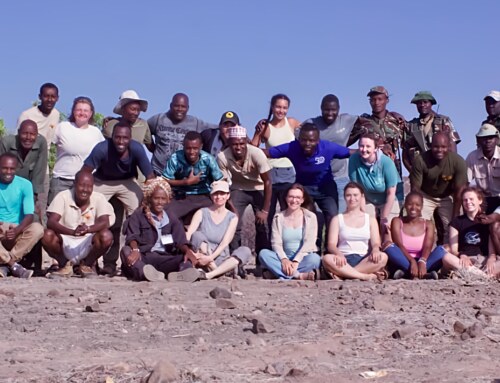We have finally entered our last module on Paleoanthropology and is one of the main reason most field school students have come to the Turkana Basin Institute Field School to learn … Human Evolution! With extensive fossil deposits, the Turkana Basin is one of the most (if not #1) important regions for human prehistory. This module, our instructor is Dr. Matthew Skinner from the University of Kent.
T study began with an introduction to skeletal anatomy and examining the difference between primates and non-primates and where us humans fit in. Living primates are classified into two suborders, Stepsirhines (e.g. Lemurs) and Haplorhines. One easy way to see this division is Stepsirhines lack a postorbital closure where you can see right through the eye socket. You can see this in the right skull cast in the image below.
Within Haplorhines, they are divided into Platyrrhines (New World Monkeys) and Catarrhines (Old World Monkeys/apes). Furthermore, Catarrhines are divided into Cercopithecoids (Old World Monkeys) and Hominoids (apes, humans, etc.). Below is a cladogram that shows the derived characteristics from Stepsirhines to Hominoids.
When and how did a primate become a human? This question will be answered through this module but first, we examined the fossil record of primate evolution and some fossils of each. Approximately 65 million years ago, the earliest primate-like mammals (Plesiadapiformes) appear in the fossil record. Next, the first true primates occur during the Eocene about 55 million years ago. About 38 million years ago during the Oligocene, fossils of the early Catarrhines appear. Finally, during the Miocene approximately 23 million years ago, monkeys and apes appear. During the Miocene (23 – 5 million years ago), various types of hominoids began to appear and evolve through that time and are shown in the diagram below.
The Turkana Basin is not only a great region where early hominid fossils have been found, it is also a location that has uncovered early apes. How is this possible on such an arid landscape? This was not the case millions of years ago. As we have learned in geology, the landscape and climate was much different than today with much more vegetation and trees. Several species of hominoids have been found and continue to be uncovered in Oligocene to Miocene deposits throughout the Turkana Basin. Below are pictures from our adventures to Oligocene to Early Miocene deposits within the Lothidok Range. In just this area, Leakey family’s fossil hunting team had found Kamoyapithecus hamiltonia, Turkanapithecus kalakolensis, Afropithecus turkanensis, and Simiolus enjiessi! Unfortunately on our outing, we did not find any primate fossils.
Kalodir & Mururot
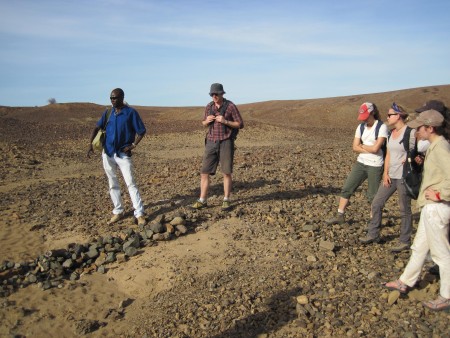
John Ekusi shows the field school students the Middle Miocene excavation site that is still being studied by Dr. Isaiah Nengo‘s team.

